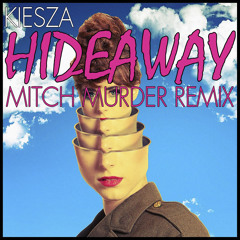
In reality, though, I have been wrong about that, especially with cues. In my mind, more options for the producer in editing together a piece for a scene is good since they may want to change it up as they see fit. instrumental? I am fully aware there are long drawn out "song" parts to this track, and I'm willing to edit (as best I can with a single mix file). Is there a fundamental difference between cue vs. I know with cues in general, it's good to get straight to the point.

This track was originally made as a "song", so it's pretty long and has distinct sections to it. The bad news is that I don't have the individual tracks anymore, but I think the mix might be passable.īesides "what do you think" in regards to this listing, I also have a couple of generic questions for the experts out there among us. I think I have three floating around the studio somewhere that could stand a chance. Long may it continue.I ran across the listing for 1980s-inspired instros (U150708NW) and remembered some stuff I worked on a while back that might fit the bill.
MITCH MURDER DX7 PATCHES SOFTWARE
It may be 2018, but synths and synth-inspired software are still managing to break new ground. Rather than being built around a set of pre-programmed musical rules, the groundbreaking experiment uses a neural network ‘trained’ by machine learning – using its own knowledge of musical examples built up over time. A recent experiment, backed by Google, combined music with artificial intelligence, with AI Duet acting as a virtual pianist that can respond to notes played by users and accompany them in a duet. These days though, computers can be seen as picking up the gauntlet from the synth, using algorithms and AI to further explore possibilities in electronic music. Acts like Electric Youth and Mitch Murder have been putting a contemporary, synth-heavy spin on '80s pop culture – particularly creating soundtracks for movies, television and video games. Then there’s the new ‘ pocket synths’, a core part of synthwave – a subgenre of synth-pop that emerged in the mid-2000s. Critically-acclaimed electronic musician Floating Points, for example, uses his Buchla synthesiser to make dance music with a classical edge.

Old analogue synths are being used to create contemporary sounds, too. It was simple and easy to use and influenced grime’s instantly-recognisable ‘magic number’ of 140 bpm – the preset tempo in FruityLoops. Like hip hop, grime has often incorporated (frequently the more raw and brash) synth sounds, with many early grime acts using the FruityLoops programme, a MIDI-only step sequencer and early software synthesiser. Kanye West, meanwhile, even has an album named in part after a type of synth. Minimoog fans Parliament, for example, have been sampled by everyone from Snoop Dogg to De La Soul. Synths have long shaped hip hop too, with samples – usually lifted from funk and disco tracks – ultilised by DJs and producers. On The Great Bleep Forward, Malcolm Cecil, one half of the duo, reveals: "Once we introduced to the synthesiser it was like the tapping of a well – all these songs would come flowing right out of him." Meanwhile, a 21-year-old Stevie Wonder - looking for new ways to make his music – met synth pioneers Tonto’s Expanding Head Band in the early 70s, and it was the meeting of very different musical minds. Rick Wakeman of Yes famously loved the MiniMoog – sometimes using 30 keyboards on stage at once – while Pink Floyd’s Dark Side of the Moon riff was made by a sequencer on the EMS VCS3 synth. Their influence can still be seen in some of today's more retro-leaning acts, like La Roux, CHVRCHES and even the early music of Lady Gaga. Without these artists and their new wave peers, popular music wouldn't sound as bold and vibrant as it does today. Electronic acts including The Human League, Ultravox and Gary Numan combined futuristic sounds with pop hooks, dominated the charts in the process. Meanwhile in the UK, Brian Eno’s 70s and 80s output was heavily inspired by the Minimoog synth, first released in 1970.įrom these experimentations came the synth-pop era, which peaked in the late 1970s to mid-1980s, a period that saw synths truly embraced by the mainstream. In 1974, synths helped Kraftwerk recreate the sounds of the trucks, cars, and passing bridges heard while driving through Germany, on their track Autobahn. Synthesisers were central to the development of electronic bands and artists in 1970s Germany – Kraftwerk and Tangerine Dream, for example, used them to make an entirely new sound. It was the decade that followed, though, which saw synths really embraced by bonafide musicians.


 0 kommentar(er)
0 kommentar(er)
